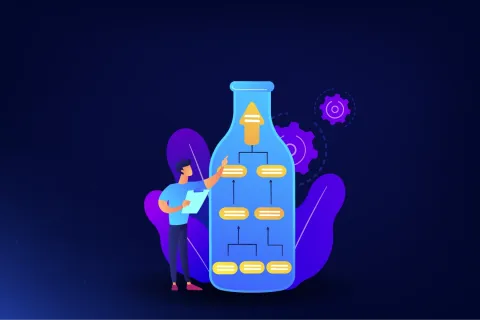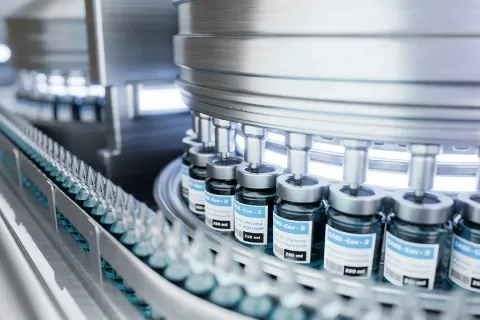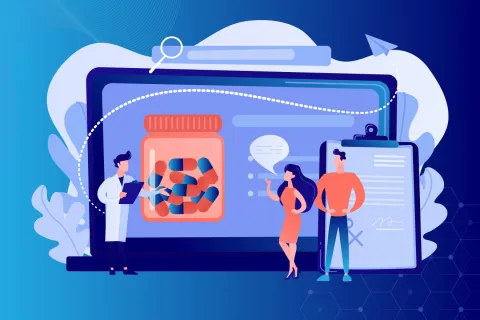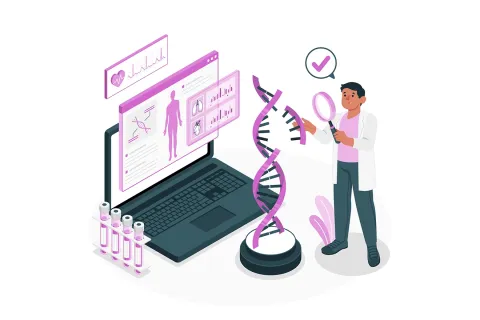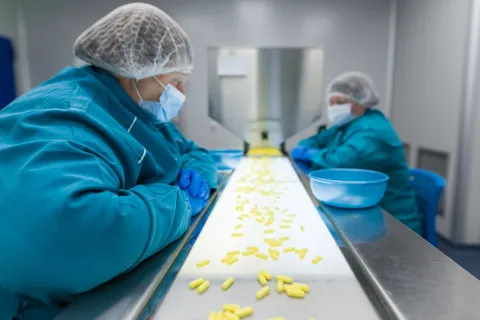
In the pharmaceutical industry, Good Manufacturing Practices (GMP) extend beyond manufacturing lines and into every facet of product lifecycle management, including artwork operations. With regulatory authorities placing increasing scrutiny on labeling and packaging compliance, artwork errors are no longer viewed as simple design flaws—they are seen as potential compliance risks that can lead to product recalls, legal penalties or compromised patient safety.
At Freyr Solutions, we understand the critical role of regulatory-compliant artwork operations in maintaining product integrity and brand trust. A GMP (Good Manufacturing Practice) environment for pharma packaging artwork management involves strict controls, documentation and quality assurance to ensure that packaging materials, labels and patient information leaflets meet regulatory standards. In this context, GMP guidelines protect patient safety by ensuring that all packaging and labeling processes are consistent, traceable and compliant with legal requirements.
The Importance of GMP in Artwork Operations
GMP regulations are designed to ensure that pharmaceutical products are consistently produced and controlled according to quality standards. When applied to artwork operations, GMP compliance helps avoid:
- Mislabeling and incorrect usage instructions
- Non-compliance with regional health authority requirements
- Delays in product release or market withdrawals
- Risks to patient safety and brand reputation
Core GMP Requirements for Artwork Operations
Artwork processes under GMP should be governed by clear Standard Operating Procedures (SOPs) and managed through validated tools and systems. Here's a breakdown of the key controls and quality measures:
| Category | GMP Requirement | Description |
| Process Control | SOP-driven Operations | GMP-compliant environments require standardized processes that everyone in the artwork management chain follows. This includes SOPs for each task, such as artwork design, proofreading, approval and release. GMP standards also require regular training. Employees are trained on SOPs, software tools, regulatory requirements and GMP guidelines to ensure consistency and compliance. |
| Approval Management | Multi-tier Review | Mandatory review and sign-off from Regulatory Affairs, Quality Assurance, and Packaging Development teams. |
| Version Control | Artwork version tracking | With multiple revisions typically needed for artwork, GMP-compliant systems must have robust version control to ensure only the latest, approved artwork is used in production. All revisions must be traceable with time-stamped version histories and rationale for changes. |
| Controlled Access | Role-Based Access | Only authorized personnel should have access to edit, review, or approve artwork files. GMP-compliant artwork management systems use role-based access control to restrict permissions, ensuring data integrity and protecting sensitive information. |
| Data Integrity and Security | ALCOA+ Principles | GMP environments must secure both physical and digital assets, protecting artwork files and data from unauthorized access. Same time, ensuring all artwork records are Attributable, Legible, Contemporaneous, Original and Accurate |
| Artwork Management System | Validation of Systems | GMP requires that all software and processes are validated to confirm they function as intended. Use of validated tools for artwork creation, review and archival with 21 CFR Part 11 compliance. |
| Training | Role-based Training Programs | Regular training on GMP and artwork SOPs for all stakeholders involved. |
| Change Control | Controlled Documentation | Any modification to artwork must go through a formal change control process with impact assessment. GMP standards require controlled documents for each step of the artwork creation and approval process. This includes maintaining records of changes, approvals and versions to prevent mix-ups between current and outdated artwork. |
| Quality Checks | Proofreading & Error-Detection Tools | Automated and manual checks to verify accuracy in layout, regulatory content and technical specifications such as barcodes. Such proofing records should be saved for audit requirements. |
| Secure Record Retention | Audit Trails | Each action within the artwork management system—such as edits, approvals and final releases—must be logged with clear audit trail. This documentation supports accountability, enabling regulators and companies to trace any changes back to their source, ensuring transparency and reliability |
The Importance of GMP in Artwork Operations
Having a GMP (Good Manufacturing Practices) environment in Pharma packaging artwork management is critical for both regulatory compliance and supply chain efficiency. Lets breakdown the importance from both angles:
Regulatory Importance
- Compliance with Health Authority Requirements
Regulatory bodies like the FDA (US), EMA (EU), MHRA (UK) TGA (Australia) and many others, mandate that all pharmaceutical packaging—including artwork—must be created, reviewed and controlled under a GMP-compliant system to ensure patient safety and product efficacy. - Minimization of Package Labeling Errors
Incorrect or inconsistent information on packaging artwork (e.g., dosage, strength, expiry, country-specific info) can lead to serious consequences like product recalls, adverse events or even patient harm. A GMP setup ensures robust error-proofing and traceability. - Audit Readiness
GMP ensures full documentation and version control, which are vital during regulatory inspections and audits. A compliant system offers a validated trail of all artwork revisions, approvals and change controls. - Control Over Changes (Change Management)
GMP mandates controlled changes and Change Control procedures—vital for managing updates due to regulatory variations, safety label changes or market expansion. - Clarity of Roles and Responsibilities
In a GMP setting, cross-functional accountabilities (e.g., QA, RA, Packaging) are well-defined and documented. This reduces ambiguities, increases transparency and enforces accountability.
Supply Chain Importance
- Error-free operations
Errors in artwork can delay production, shipment or market launch. A GMP framework ensures right-first-time execution, helping avoid costly delays or product wastage in the supply chain. - Smooth Market Releases & Launches
Timely availability of compliant printed packaging material are critical for product availability in different markets. GMP-compliant artwork change workflows help avoid delays and artwork errors, reducing risk in time-sensitive launches. - Global Consistency and Localization
With multiple SKUs across geographies, maintaining artwork integrity while localizing for country-specific needs (languages, regulatory statements) becomes crucial. GMP-driven systems ensure version control, parallel reviews and master data consistency. - Traceability & Recall Management
In case of product recall or packaging deviations, a GMP-controlled system enables traceability down to the version of artwork used, print batch and approval timelines. Also, helping in root cause analysis and corrective actions. - Improved Vendor and Printer Collaboration
A GMP setup assists in timely delivery of approved artworks to print vendors that reduces back-and-forth on any issues and aligning them to regulated expectations including printed packaging material quality checks before bulk printing.
Freyr’s Expertise in GMP-Compliant Artwork Operations
Freyr offers a centralized, end-to-end artwork management solution tailored for the life sciences industry. With in-depth regulatory knowledge and global reach, we help clients:
- Streamline complex multi-market artwork processes
- Ensure zero-error artwork change controls for every lifecycle stage and audit readiness
- Integrate digital artwork systems with regulatory platforms
- Manage multilingual content with accuracy and speed
- Maintain strict documentation for all change requests and approvals
Our dedicated Packaging Artwork Studio and Regulatory labeling teams operate in full compliance with GMP, ensuring that your labeling and packaging materials align with regulatory expectations of every market.
Conclusion
In today’s regulatory landscape, artwork operations are a critical quality function, not just a design task and involves multiple stakeholders to run the artwork business efficiently. Incorporating GMP principles into artwork management safeguards patient safety, ensures market compliance and protects brand reputation. At Freyr, we bring together regulatory acumen and operational excellence to deliver compliant, efficient, and future-ready artwork services.
